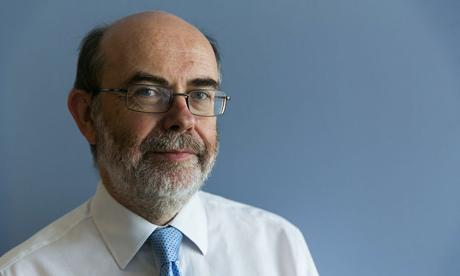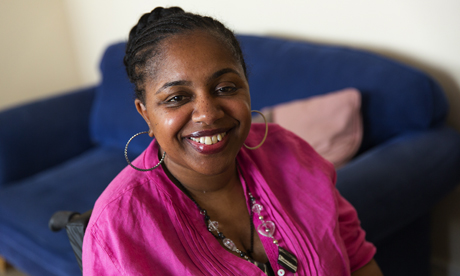Hackney’s St Joseph’s Hospice gets five stars from patients

Head of the hospice: Michael Kerin. Photograph: Eleonore de Bonneval
Local folklore has it that mothers used to warn their children to cross the road to avoid walking past the gates of St Joseph’s Hospice on Mare Street for fear they might catch a deadly illness.
Whether or not this story is true, it captures the ludicrously morbid way in which this institution has been viewed over the years.
“The biggest myth is that once you come in, you never come out,” says Michael Kerin, its Chief Executive.
In fact, of the many hundreds of patients on St Joseph’s books at any one time, only half die in the hospice, and the building is far from depressing.
Of those that are reaching the end of their lives, many choose to live out their last days at home, perhaps after having stayed for set periods at St Joseph’s for recuperation and respite care during which they can receive therapies like acupuncture, physiotherapy, yoga and reiki.
‘Chill-out zone’
“When I’m here I treat it as a holiday,” says Janice Augustin, 48, a former homecare worker for Hackney Council who has multiple sclerosis and comes to the hospice for a fortnight’s rest and ‘pampering’ every few months.
“I feel at peace here,” she says. “It’s my chill-out zone.”
Ms Augustin had to leave work in 2010 after she began suffering from severe sciatica.
“I couldn’t even turn my head to talk to someone,” she says. “The pain was excruciating.”
She had to move back in with her parents in Dalston and was reluctant to come to the hospice until she was recommended it by a friend with motor neurone disease.
“He said: ‘Jan, it’s lovely,’” she recalls. “I used to tease him and call him ‘The Celebrity’, because he would always turn up late for our gym class because he was having a shower and pampering himself.”
But he had a point: ‘day hospice’ patients can drop in to visit the gym, have their nails done, enjoy the well-kept gardens and take part in art therapy classes at Finding Space, the building’s ‘community hub’, where dozens of niche local groups including the Hackney Older Lesbian Group meet.

Janice Augustin, Photograph: Eleonore de Bonneval
Josie Farrugia, 41, who has cancer, comes for the quizzes, bingo, arts and crafts and physiotherapy.
“It’s like a five star hotel,” she says.
The hospice has also arranged nights out in Hackney and trips abroad for teenagers from Richard House, a children’s hospice in Newham.
Sisters of mercy
St Joseph’s was founded in 1900 by Irish nuns but has always taken people of all religions and none.
“We’ve taken prisoners and we’ve taken asylum seekers,” says Michael Kerin, “so there’s no social reason why someone couldn’t come here.”
Of its annual budget – just under £15 million – over half comes from the NHS locally, meaning the institution must find between seven and eight million each year through charitable donations.
“Hospice care is the one area of care where the state doesn’t pretend to make full provision,” says Mr Kerin.
Some patients who are in touch with community nurses may never even set foot in the hospice building.
These nurses are specialists in providing practical help to deal with end-of-life considerations that can cause anxiety for those with terminal illnesses, such as the arrangements for one’s children, rehoming of pets and financial concerns.
The hospice, which employs 300 staff who are supported by a small army of volunteers, also offers a counselling and a bereavement service to support families after the death of a loved one.
Time to talk
“The reason I came into palliative care is that I had worked in oncology and worked in surgery and found that the luxury that we have here is time,” says community nurse Elizabeth Ryder.
“There are some brilliant GPs who have got that, but who can’t give it to everybody, and you can’t necessarily take time out to speak to patients on a noisy acute hospital ward.
“The first thing I do when I meet a new patient is listen.
“Often someone has gone through a whole experience of treatment and of good news and bad news.
“They have often not had the opportunity to just sit and talk about how they feel.
“It’s about giving someone the opportunity just to say what’s going on in a really safe environment, without any repercussions.”
Garbed in wacky costumes, supporters of St Joseph’s Hospice will dash down Mare Street as part of a charity fundraising event next month.
The Hackney Empire and St Joseph’s Hospice are hosting a ‘Dame Dash’ fun run featuring pantomime heroes like Peter Pan, Prince Charming and the Pantomime Horse on 27 October.
For more information on how to register see damedash.org.uk

The recent death of Maria – the last of the Von Trapp children, took me back in reflection to East London…
When the movie came out (1965) I was working nights as a male nurse. A long prominent streetside sign read St. Joseph’s Hospice for The Dying. It was/is run by The Irish Sisters of Charity. They organised its management and worked on the Wards. Most of the nurses were recruited from the whole of Ireland. The domestic staff came from Italy.
Sister Monica – from Kilkenny, would sit with me during quite spells and we would chat. She loved Elvis Presley: her favourite song – she often told me was – Crying in The Chapel. The youngest in her Community, she was more precious to it than usual, because vocations were drying up. As I looked into her beautiful stiff white starched enclosed face the fact that she had a blue eye and and a brown one was unmistakable.
She led a group of her sisters in an appeal to go and see – The Sound of Music – traditionally they were not allowed to go to the cinema. Bolstered by her urgings to view it and report back to the Mother Superior – I did. There was nothing rude or naughty in the “fillum” – how could there be as there were loads of nuns in it? My report was a sort of second opinion as Canon Crowley – the visiting Chaplain had seen it and gave the nod….
After some excited meetings, the whole community went out in groups to see the film just down the road in the Hackney Odeon. It was the first time in the whole of the Sister’s Community history that nuns had been allowed to go to the pictures. The feedback in conversations lasted for months. I was “doing a line” at the time with one of the nurses: she was from Co. Fermanagh and became my wife in 1968. Straight from the church at the invitation of the Community, Mary, still in her wedding dress, was taken round the wards by a crowd of Sisters in their best white nursing habits. Then we had sherry in the convent..
Tobias